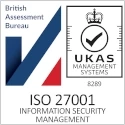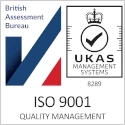15
+
YEARS OF
EXPERIENCE
1000
+
SUCCESSFUL
Projects
80
+
Satisfied
Clients

As businesses increasingly adopt cloud platforms to host applications, store data, and support operations, the importance of effective Azure and AWS monitoring cannot be overstated. Both Microsoft Azure and Amazon Web Services (AWS) provide robust cloud ecosystems, but managing their performance, availability, and security requires proactive oversight. Azure and AWS monitoring ensures that cloud resources operate optimally, threats are detected early, and business-critical workloads remain uninterrupted. It is a core component of proactive monitoring and maintenance, enabling organizations to leverage cloud infrastructure with confidence.
Understanding Azure and AWS Monitoring
Azure and AWS monitoring involves the continuous observation, analysis, and management of cloud resources to maintain health, availability, and efficiency. It includes monitoring virtual machines, storage accounts, databases, containers, network configurations, and application performance. Monitoring provides real-time insights into system behavior, resource utilization, and security events, allowing IT teams to identify and resolve issues before they impact operations.
While Azure and AWS both offer native monitoring tools—such as Azure Monitor, Azure Application Insights, AWS CloudWatch, and AWS X-Ray—effective cloud management often requires a consolidated approach that integrates these services into a unified monitoring framework. This provides comprehensive visibility, cross-platform analytics, and actionable insights for both cloud environments, ensuring that performance, security, and compliance are maintained consistently.





The Importance of Cloud Monitoring in Azure and AWS
Modern businesses rely on cloud platforms to deliver applications and services with speed and scalability. However, cloud resources are dynamic, often scaling automatically based on demand, which introduces complexity in performance management and cost control. Without continuous monitoring, inefficiencies, misconfigurations, or security vulnerabilities can go unnoticed, leading to downtime, degraded user experiences, and unexpected costs.
Azure and AWS monitoring provides organizations with the visibility needed to maintain operational excellence. Continuous oversight allows IT teams to detect anomalies, performance bottlenecks, or potential security threats in real time. By identifying issues early, organizations can mitigate risks before they escalate, ensuring uninterrupted service delivery and consistent user satisfaction.
Security is a critical aspect of monitoring. Both Azure and AWS environments face ongoing threats from cyberattacks, unauthorized access, and misconfigured resources. Monitoring helps detect suspicious activities, unusual traffic patterns, or policy violations, allowing teams to respond immediately and maintain compliance with industry standards.
Furthermore, cloud monitoring supports cost optimization. By analyzing usage patterns, organizations can identify idle resources, optimize workloads, and reduce unnecessary spending. This combination of performance management, security, and cost control makes Azure and AWS monitoring an essential element of cloud strategy.
How Azure and AWS Monitoring Works
Monitoring in Azure and AWS relies on data collection, analytics, and alerting. Azure Monitor collects telemetry from applications, virtual machines, networks, and storage resources, providing a centralized view of performance and health. AWS CloudWatch performs similar functions, tracking system metrics, logs, and events across the AWS ecosystem. Both platforms allow IT teams to set thresholds, configure alerts, and automate responses to incidents.
Advanced monitoring strategies integrate these tools with analytics and automation platforms. By correlating data across cloud services, teams can detect trends, anticipate potential failures, and take corrective action before problems affect users. Automation further enhances monitoring by enabling automated scaling, patch management, and self-healing workflows, reducing manual intervention and improving response times.
Integration is key to hybrid or multi-cloud environments. Consolidated dashboards allow IT teams to monitor Azure and AWS simultaneously, providing a unified view of workloads, performance metrics, and security events. This centralized approach ensures that all cloud assets are visible, manageable, and optimized.
Proactive Monitoring and Maintenance
Proactive monitoring and maintenance services to identify issues early, ensuring optimal performance and minimizing system downtime.Hybrid Monitoring
Integrated hybrid monitoring solutions to manage and optimize performance across both on-premises and cloud environments.Preventive Maintenance
Preventive maintenance services to detect and resolve potential issues before they impact system performance and business operations.
The Role of Azure and AWS Monitoring in Proactive Maintenance
Within a proactive monitoring and maintenance framework, Azure and AWS monitoring enables predictive and preventative action. IT teams can leverage monitoring insights to identify potential bottlenecks, resource constraints, or security vulnerabilities before they affect operations. This proactive approach reduces downtime, enhances performance, and ensures that cloud resources are aligned with business needs.
Predictive analytics also helps organizations plan for growth, ensuring that workloads scale efficiently while avoiding overprovisioning. Continuous monitoring supports compliance and governance by maintaining detailed logs of access, configuration changes, and activity, helping businesses meet regulatory and contractual obligations with confidence.
Business Benefits of Azure and AWS Monitoring
The business benefits of Azure and AWS monitoring extend across reliability, efficiency, security, and cost management. Organizations gain peace of mind knowing that their cloud environments are continuously observed and optimized, reducing the risk of downtime or performance degradation. Real-time alerts and insights allow IT teams to resolve issues quickly, ensuring smooth service delivery and improved user satisfaction.
Monitoring also enables better resource utilization and cost optimization by identifying unused or underutilized cloud assets. Proactive security monitoring helps prevent breaches and maintain compliance, enhancing trust with customers and partners. Overall, Azure and AWS monitoring transforms cloud management from reactive troubleshooting into a strategic, data-driven process that supports growth and innovation.
Conclusion: Maximizing Cloud Potential Through Monitoring
Azure and AWS monitoring is more than a technical requirement—it is a strategic approach to cloud management. By providing continuous visibility, security oversight, and performance insights, it empowers organizations to operate confidently in complex cloud environments. Within the broader framework of proactive monitoring and maintenance, cloud monitoring ensures that businesses can prevent issues, optimize resources, and maintain compliance while maximizing the value of their cloud investments.
In an era where cloud performance drives business success, investing in Azure and AWS monitoring is essential for operational resilience, cost efficiency, and long-term growth.

answer time
satisfaction
score
on initial call
same business
day









